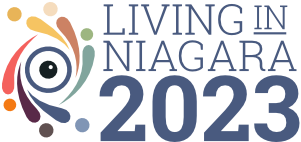In the 2014-2015 school year, there were 61,142 students enrolled in the 4 publicly-funded school boards in Niagara.
- The District Conseil scolaire Viamonde is the French-language public school board covering the central south-western region of Ontario, including Niagara.
- Conseil scolaire de district catholique Centre-Sud is the Catholic French-language school board, also covering the central south-western region of Ontario.
- The District School Board of Niagara (DSBN) operates 79 elementary schools and 20 secondary schools. Retrieved from: http://dsbn.org/
- The Niagara Catholic District School Board (NCDSB) operates 49 elementary and 8 secondary schools. Retrieved from: http://www.niagaracatholic.ca/
| School Board in Niagara | Enrolment in 2014-2015 school year | Per cent |
| Conseil scolaire Viamonde (CSV) (Niagara schools only) | 582 | 0.95 |
| Conseil scolaire de district catholique Centre-Sud (CSDC-CS) (Niagara schools only) | 1,765 | 2.89 |
| District School Board of Niagara (DSBN) | 36,582 | 59.83 |
| Niagara Catholic District School Board (NCDSB) | 22,213 | 36.33 |
| Total enrolment | 61,142 | 100 |
Secondary school graduation rates in Niagara are increasing, supported by students’ access to alternative learning opportunities, co-op programs and Specialist High Skills Majors.
The following tables and charts are based on data provided by the Ontario Ministry of Education.
| 2016 Secondary School Graduation Rates Across Ontario | ||
| Four-Year Graduation Rate | Five-Year Graduation Rate | |
| Provincial Graduation Rate | 79.6% | 86.5% |
| School Boards in Niagara | ||
| CS Viamonde | 87.5% | 92.6% |
| CSDC Centre-Sud | 89.5% | 92.3% |
| DSB Niagara | 78.9% | 84.6% |
| Niagara CDSB | 92.1% | 94.0% |
| Selected Other School Boards in Ontario | ||
| Durham CDSB | 88.8% | 91.7% |
| Durham DSB | 78.7% | 86.1% |
| Hamilton-Wentworth CDSB | 79.8% | 86.4% |
| Hamilton-Wentworth DSB | 70.0% | 78.8% |
| London District Catholic School Board | 84.6% | 89.8% |
| Thames Valley DSB (London) | 66.9% | 78.3% |
| Toronto CDSB | 84.5% | 89.5% |
| Toronto DSB | 73.4% | 82.5% |
| Waterloo CDSB | 78.1% | 85.9% |
| Waterloo Region DSB | 68.0% | 81.0% |
| School Board | 2015 Four-Year
Graduation Rate |
2015 Five-Year
Graduation Rate |
| DSB Niagara | 77.4% | 85.1% |
| Niagara CDSB | 91.3% | 93.5% |
| CS Viamonde | 87.9% | 92.0% |
| CSDC Centre-Sud | 91.0% | 93.7% |
| Provincial Graduation Rate | 78.3% | 85.5% |
The following table illustrates the average five-year graduation rate in Niagara, across the four publicly-funded school boards (District School Board of Niagara, Niagara Catholic District School Board, Conseil scolaire Viamonde, and Conseil scolaire de district catholique Centre-Sud). This rate is shown in comparison to the Ontario average for each year.
The next table provides a more detailed look at completion rates across the four boards:
Source: Ontario Ministry of Education
Retrieved from: https://www.ontario.ca/data/ontario-public-schools-enrolment and https://news.ontario.ca/edu/en/2017/05/2016-graduation-rates-across-the-province.html
Barriers to Post-Secondary Education – Perspectives from Niagara (NCO policy brief #22): Post-secondary education (PSE) is considered to be increasingly essential in today’s fast-paced knowledge economy yet some students with the potential to succeed experience barriers to participation. According to 2011 Statistics Canada data, some 41% of Niagara Region’s population between the ages of 25-64 (more than 92,500 people) does not have post-secondary education of any type, higher than provincial and national averages. In this policy brief Dr. Cassidy uses interviews and focus groups to investigate why this number is so high. This brief is intended to encourage further dialogue on access to PSE in Niagara. Building upon data from a qualitative research study, it explores how some people in Niagara perceive the challenges and barriers to choosing post-secondary education.
Five areas for attention for additional dialogue, to create the conditions for increased rates of post-secondary education in Niagara have been identified:
- Recognize the importance of addressing social-emotional needs in school
- Help every young person get excited about their future
- Consider the implications of choosing academic or applied courses at an early age
- Provide more information through a collaborative approach
- Start building post-secondary awareness and preparation at a young age
Labour Force Educational Attainment is profiled in the 2016 Local Labour Market Planning Report produced by the Niagara Workforce Planning Board. The following tables are based on 2011 Statistics Canada data for the St. Catharines-Niagara Census Metropolitan Area (CMA). Note: the St. Catharines-Niagara CMA does not include Grimsby and West Lincoln.
The table below “compares the general levels of educational attainment for the St. Catharines-Niagara CMA’s labour force. As of 2011, 56.6% of Niagara’s labour force had completed some level of post-secondary training (e.g.: a trades certificate, college diploma, or university degree). Nearly 31.8% of the labour force had a high school diploma as their highest level of education. Only 11.5% of the labour force was absent any completed education.”
| Labour Force Educational Attainment in St. Catharines-Niagara CMA versus Ontario, 2011 | |||
| No certificate, diploma, or degree | High school completion | Post secondary certificate, diploma or degree | |
| Niagara | 11.5% | 31.8% | 56.6% |
| Ontario | 10.4% | 26.4% | 63.3% |
Source: Local Labour Market Planning Report 2016, Niagara Workforce Planning Board.
Retrieved from: http://www.niagaraknowledgeexchange.com/resources-publications/local-labour-market-planning-report-2016/
The following table “breaks down the levels of educational attainment among individuals holding a post-secondary qualification as of 2011, the latest year for which data are available. Compared to Ontario as a whole, Niagara’s workforce has a greater concentration of college-educated individuals (46.9% in Niagara versus 36.7% in Ontario). Niagara possesses an advantage in individuals with an apprenticeship or trades certificate (16.3% locally compared to 11.7% at the provincial level). A total of 31.1% of Niagara’s workforce hold a university degree compared to 44.6% across the province.”
| Post-Secondary Educational Attainment in St. Catharines-Niagara CMA Versus Ontario, 2011 | ||||
| Apprenticeship/trades certificate or diploma | College diploma | University certificate or diploma below bachelor level | University certificate or diploma at bachelor level or above | |
| Niagara | 16.3% | 46.9% | 5.7% | 31.1% |
| Ontario | 11.7% | 36.7% | 7.0% | 44.6% |
The annual Niagara College (NC) ‘NC At a Glance’ publication profiles the most recent enrolment and program statistics for the College. Fall 2017 enrolment at the college includes a total of 10,072 students.
Source: Niagara College, NC At a Glance, December, 2017.
Retrieved from: http://www.niagaracollege.ca/planning-and-institutional-research/wp-content/uploads/sites/6/2017/12/nc-at-a-glance-december-2017.pdf
Experiential Education
Both Brock University and Niagara College are increasing the number of experiential learning opportunities for students to engage in within the Niagara community.
Niagara College is a leader in applied education, with a long and significant history of delivering experiential and work-integrated learning (WIL). As of the fall of 2017, Niagara offered over 222 work integrated learning activities across 91 programs. Over 6,800 of the college’s students who are enrolled full-time in the fall of 2017 are enrolled in a program that comprises one or more WIL activities over the duration of their program. WIL activities cover a broad range of experiences, including apprenticeship, clinical placements, co-ops, course-based research and Niagara College’s unique ‘Learning Enterprises’ – small businesses that give students the opportunity to provide products or services to the public.
Source: Niagara College www.niagaracollege.ca
Since 2014, Brock has expanded co-op enrolments by 500 students and has introduced five new co-op programs. Brock has also increased service learning engagement by 600 student projects/placements. In 2016 Brock was the first University in Canada to define, and have its Senate adopt, over twenty forms of curricular experiential learning; this impacts the breadth and depth of experiential learning opportunities inside and outside the classroom for the university’s students.
Giving High School Students an Introduction to the University Experience
Brock University is partnering with the Niagara Catholic District School Board to deliver a new dual credit course in the Fall of 2017 intended to give high school students an early introduction to kinesiology. The course will offer 30 Grade 12 students the opportunity to travel to Brock twice a week to learn about the science of human movement including topics such as anatomy, physiology, nutrition, biomechanics and the role of physical activity in society. These students will receive academic credit at both the high school level and Brock University.










